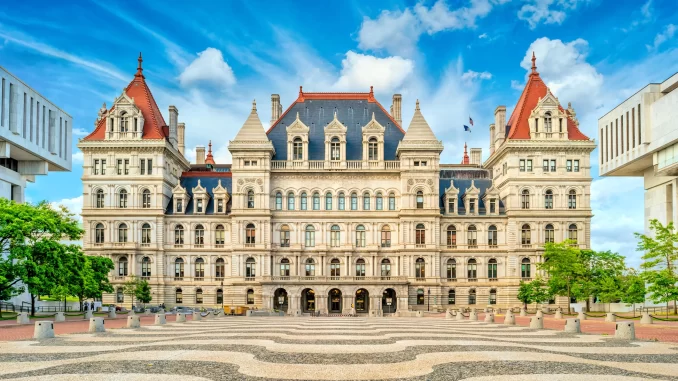
By Hank Russell
A recent report from the Rockefeller Institute has shown that New York State has received a positive return on its balance of payments to the federal government, compared to what the state got back from Washington, D.C., thanks to pandemic funding.
According to the report, in 2023, New York received $10.3 billion more from the federal government than it sent due to the “pandemic-induced volatility.” As a result, New York moved up the list of dollar balance from 46th in 2022 to 27th the following year. Had it not been for that additional money, New York would have had a negative balance of $23.1 billion and would have been ranked 48th in the nation, just above New Jersey (-$26,5 billion) and California (-$29,0 billion).
Further, New York received “a disproportionately large share of funding” from the federal COVID-19 funding program, getting $1,045 per capita, as opposed to $650 nationwide.
“New York’s return to a positive balance of payments in 2023—and its 19-step improvement in rank on a total dollar basis—was driven by a substantial decline in federal revenue collections, along with the state’s disproportionately large share of what remained of COVID-19 pandemic funding,” said the report’s authors, Lynn Holland and Patrick Schumacher.
Federal revenues collected from New Yorkers fell 8.4% between 2022 and 2023, compared to a smaller 7.3% drop in national collections that can be allocable to the states, according to the report. Because New York possesses the fourth-largest revenue base of the 50 states, this 1.1 percentage point differential translates into a very large dollar value, more than offsetting the decline in federal expenditures to the state.
The report also found that, for every dollar New York sent to the federal government in 2023, it received $1.04 in federal expenditures. This compares to an average of $1.32 received for every dollar contributed across the 50 states. As a state with a high concentration of income and wealth, New York continued to contribute significantly more in receipts on a per capita basis ($16,145) than the national average ($12,662)—a difference of $3,483.
“New York’s expansive fiscal capacity is often construed as a justification for New York to be subsidizing other states, but this argument fails to appreciate the extreme diversity of economic outcomes within the state and the equally diverse needs of its population,” Holland and Schumacher said. “While there are numerous indicators of need, produced by various federal agencies, New York tends to score high on all of them. That need is easily masked by the great wealth of a relative few.”

